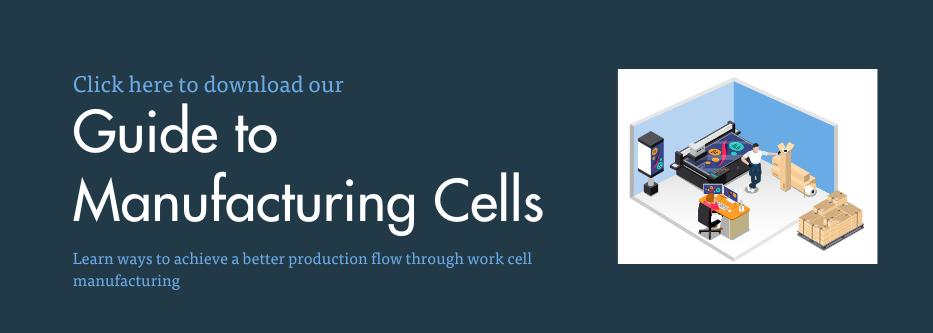We're all trying to eliminate waste, optimize processes, accelerate production, reduce costs, and deliver products to market as quickly as possible. Manufacturing cells are one of many lean manufacturing strategies that is gaining popularity.
Manufacturing cells combine the advantages of batch production and continuous flow production. While transitioning a facility to work cells can be a significant undertaking, companies often report immediate improvements in quality, efficiency, workforce performance, and more.
Even more enticing is that there are few negative effects or drawbacks to cellular production when implemented strategically.
Benefits of Manufacturing cells Include:
- High productivity – A well-designed cell provides quick, efficient flow and high-quality production.
- Improved flexibility – New or modified products can be added without impacting the existing process.
- Performance monitoring – Segmentation of cells allows management to monitor the output, including identifying over- and under-performing groups.
- Enhanced quality control – Cells make locating, isolating, and taking corrective action against quality issues easier.
- Flow systemization – Processes for low-changeover and high-variety parts can be optimized one cell at a time.
- Waste reduction – Improved production efficiency and material usage can reduce scrap and overall waste.
- Workforce enhancements – Operators are provided more autonomy and typically report higher job satisfaction.
- Access to clean rooms – Cells can be set up as a clean room to prevent contamination and meet ISO standards.
While manufacturing cells offer numerous benefits, there are some limitations that OEMs need to be aware of when considering this strategy.
A common hurdle that companies face when switching to manufacturing cells is internal resistance. Change can be intimidating for everyone – from management to operators. However, organizations with a strong culture of continuous improvement can often overcome this resistance by explaining the long-term vision and conveying the clear benefits of this new approach.
Limitations of manufacturing cells Include:
- Operator training – Since cell operators are responsible for multiple processes, additional training may be necessary.
- Scaling to demand – If the volume increases or decreases significantly, cells may need to be reconfigured to scale accordingly.
- Risk of downtime – Equipment failure can disrupt the cell’s flow (and, therefore, the broader manufacturing process). To reduce downtime, investment should be made into maintenance, repairs, and potentially having backup equipment available for key processes.
- Logistics – New plans will need to be developed to transfer components from cell to cell to ensure productivity and avoid bottlenecks.
- Challenges with seasonal shifts – Manufacturing cells are best suited for consistent labor and production; otherwise, equipment and material inventory could be underutilized.
Manufacturing cells in Action
Tapecon's headquarters in Buffalo, New York, has experience setting up manufacturing cells for our customers. Here is one example:
We recently had a client come in for a tour of our manufacturing facility. The company was in the process of completing an acquisition and was unsure how to handle the increased manufacturing demands. After learning more about Tapecon's manufacturing capabilities, the customer quickly determined that outsourcing one of their work cells was the most effective and cost-effective solution for their requirements. Tapecon brought some of the customer's equipment and employees into our factory and set up workstations for them to manufacture their products. The customer was able to save money and improve manufacturing efficiency for their other core products as a result.

Let’s make something great
With over 100 years of manufacturing experience, Tapecon works with product teams to solve challenges, create products, and enhance lives. Learn more about our manufacturing services.